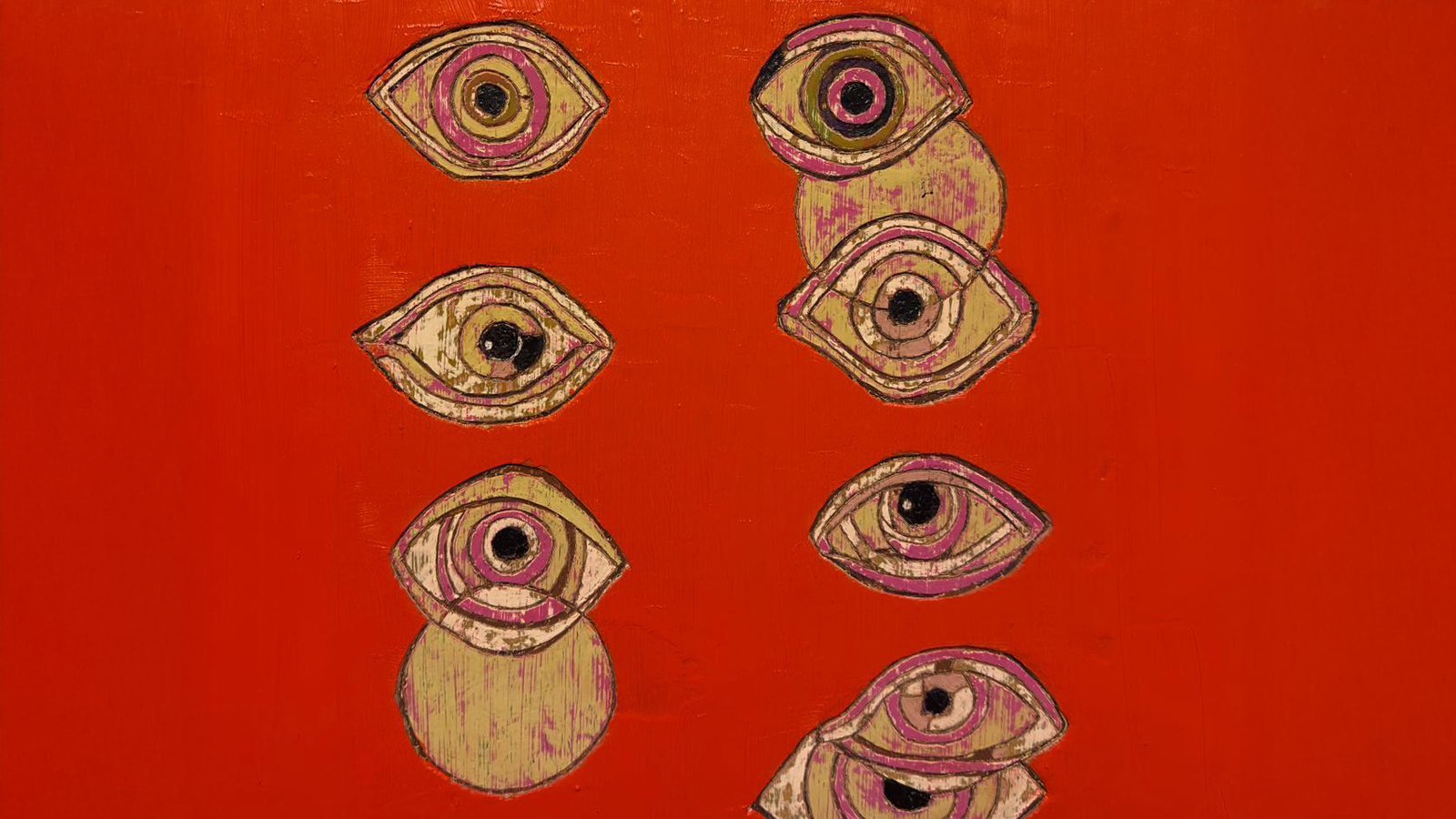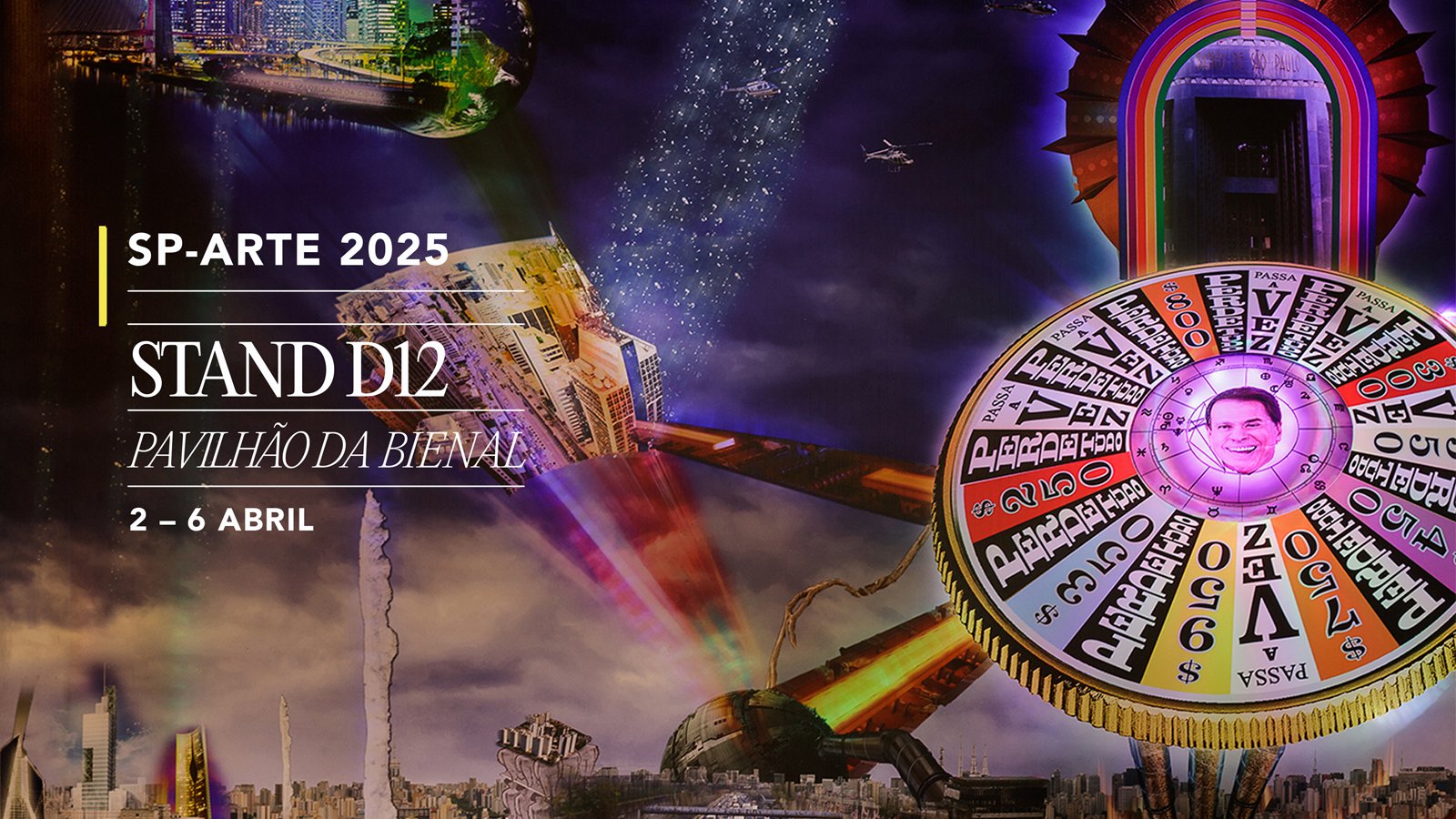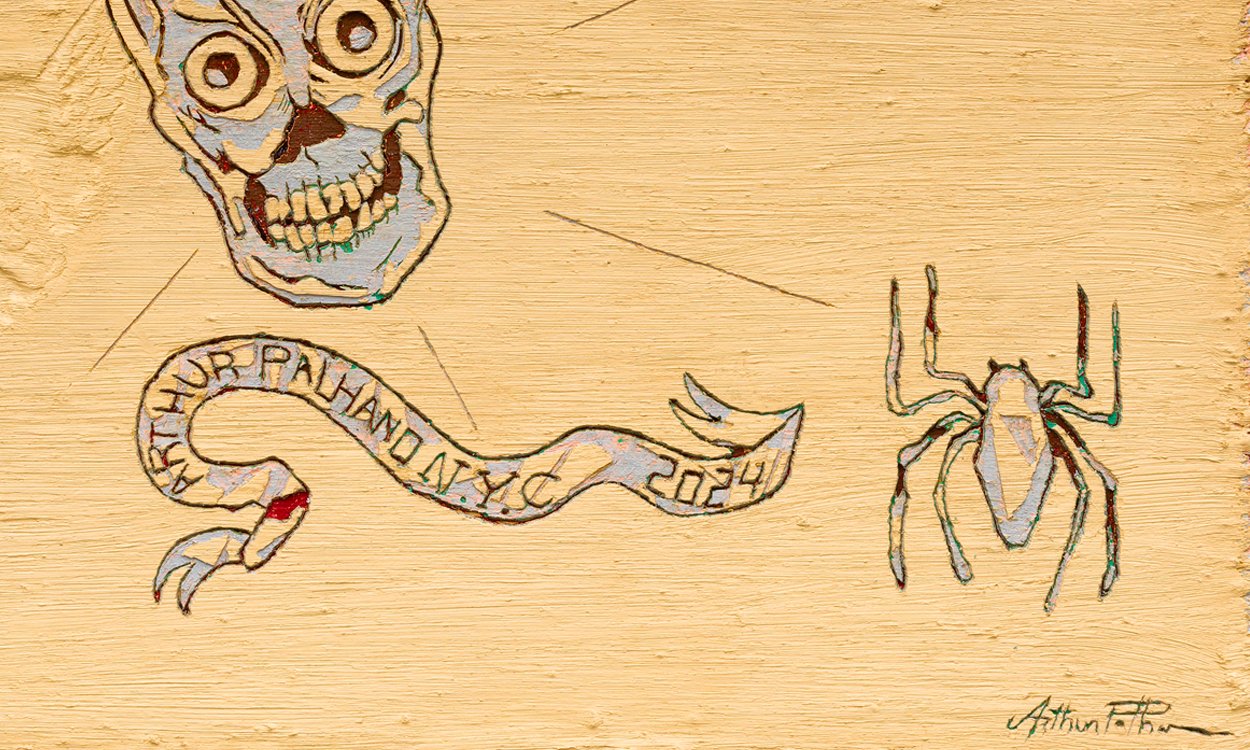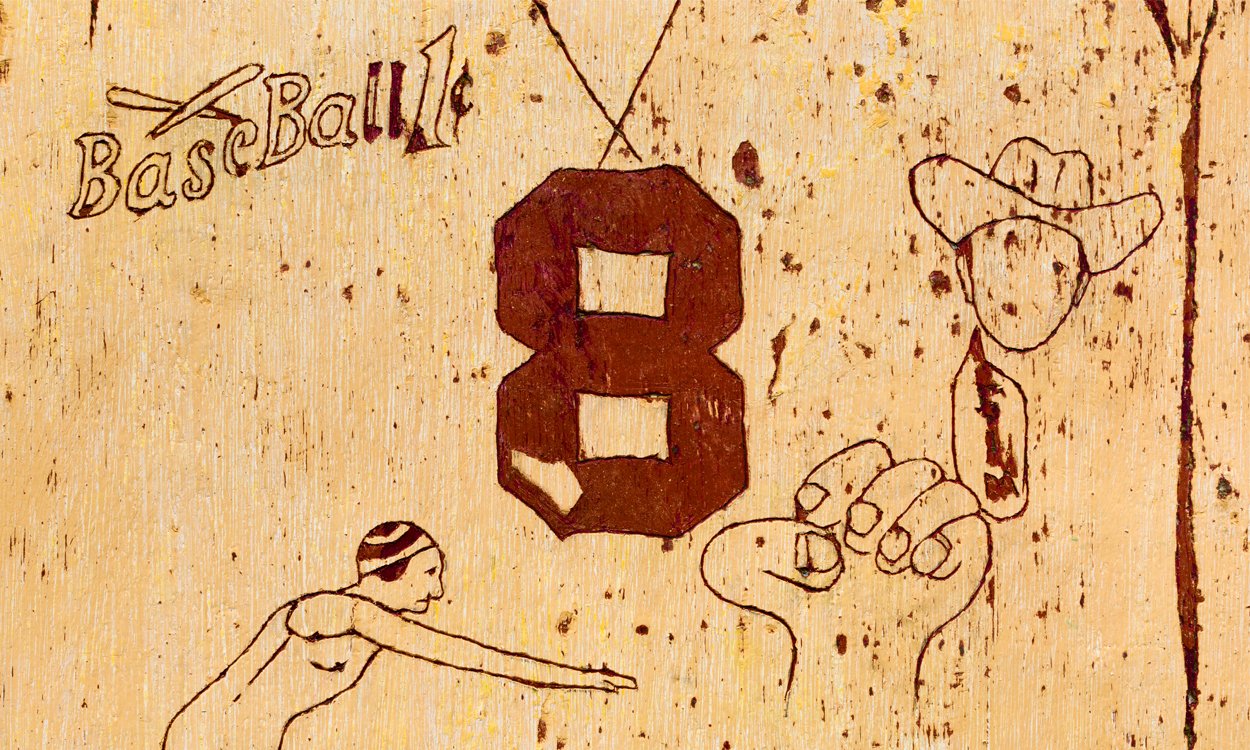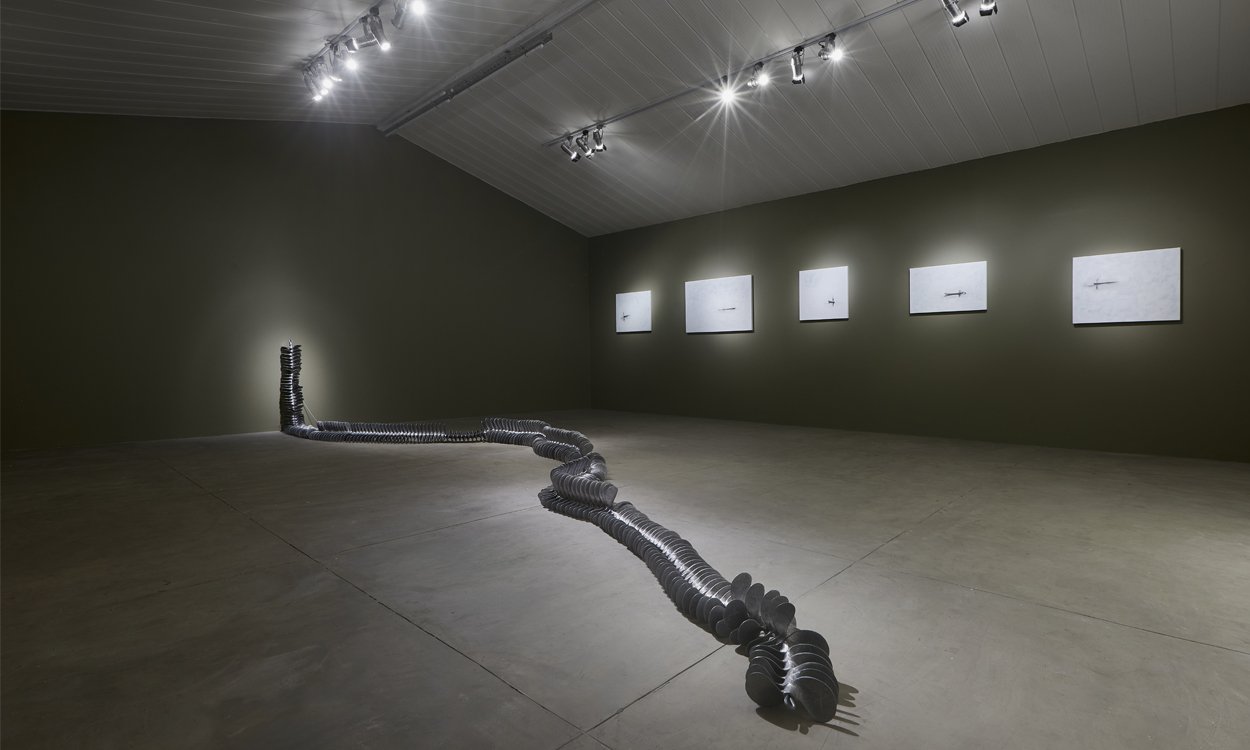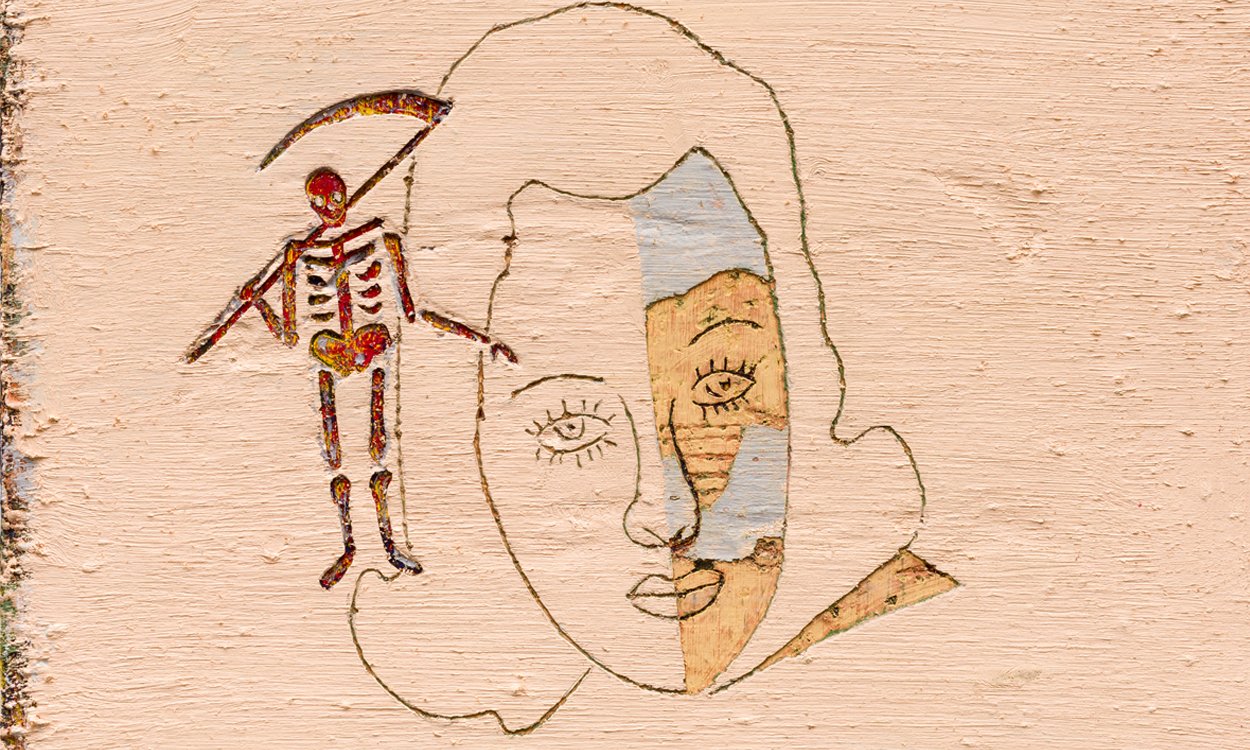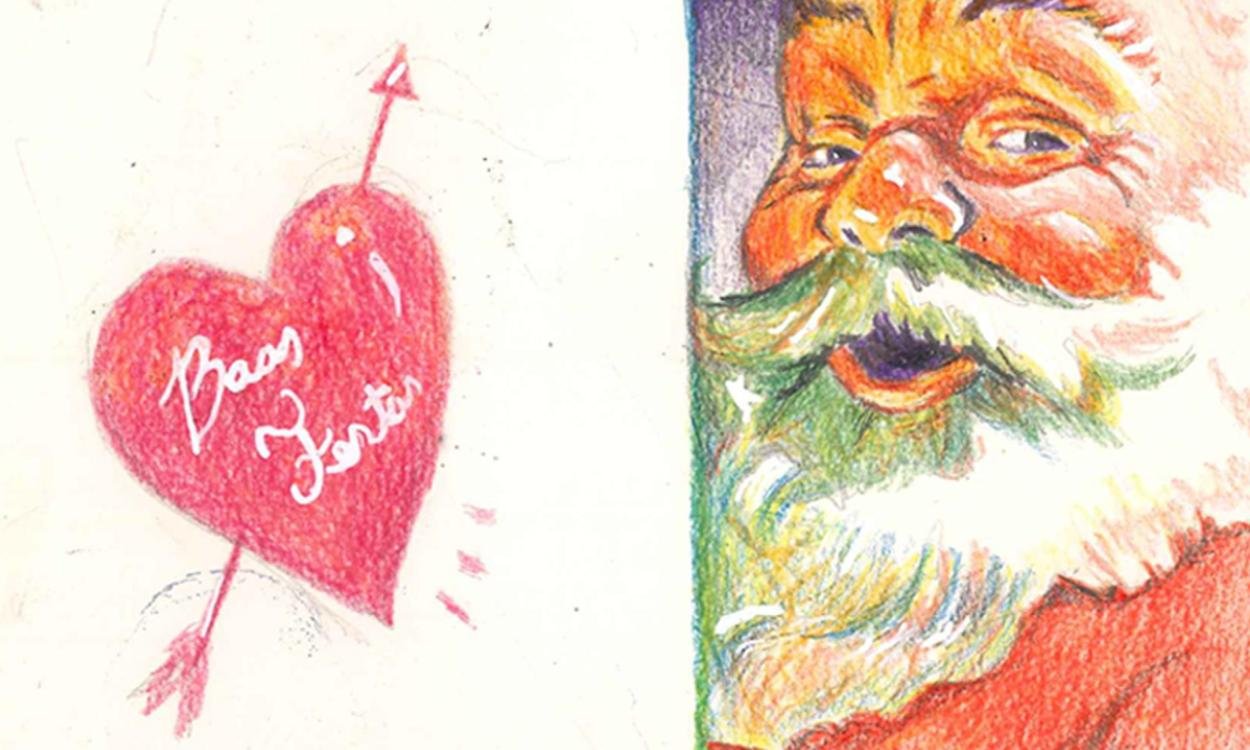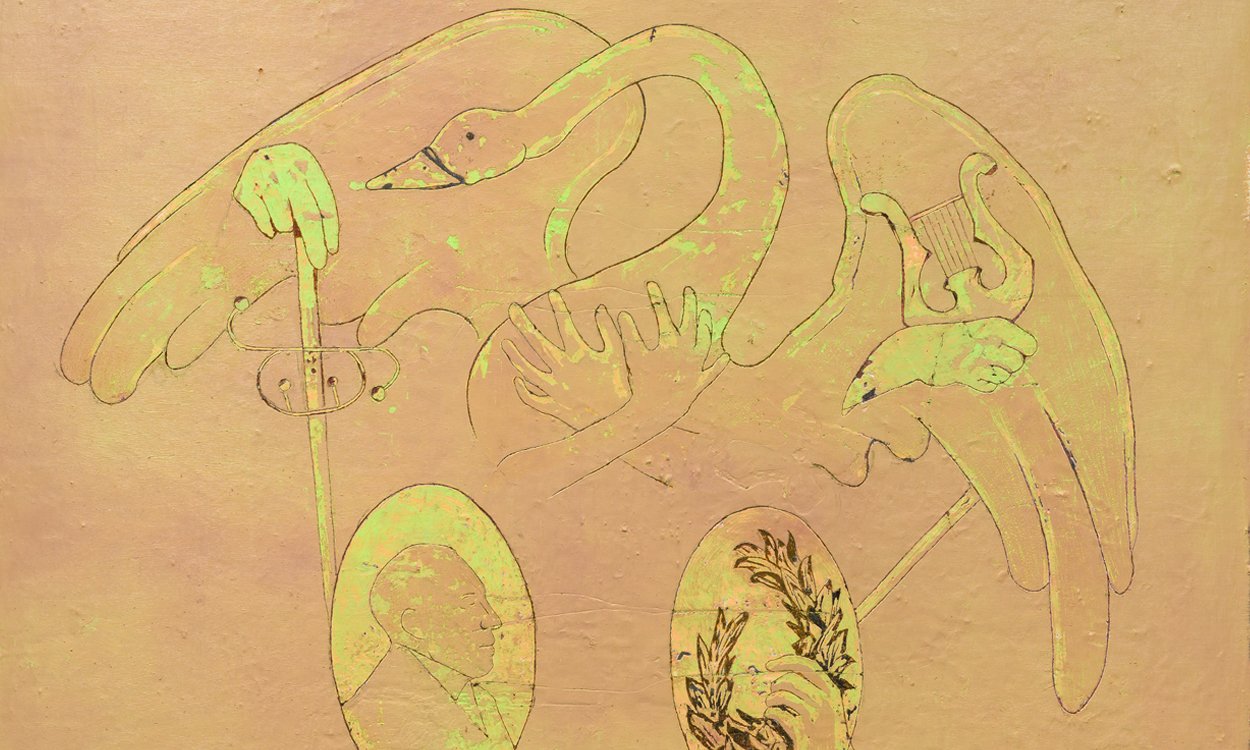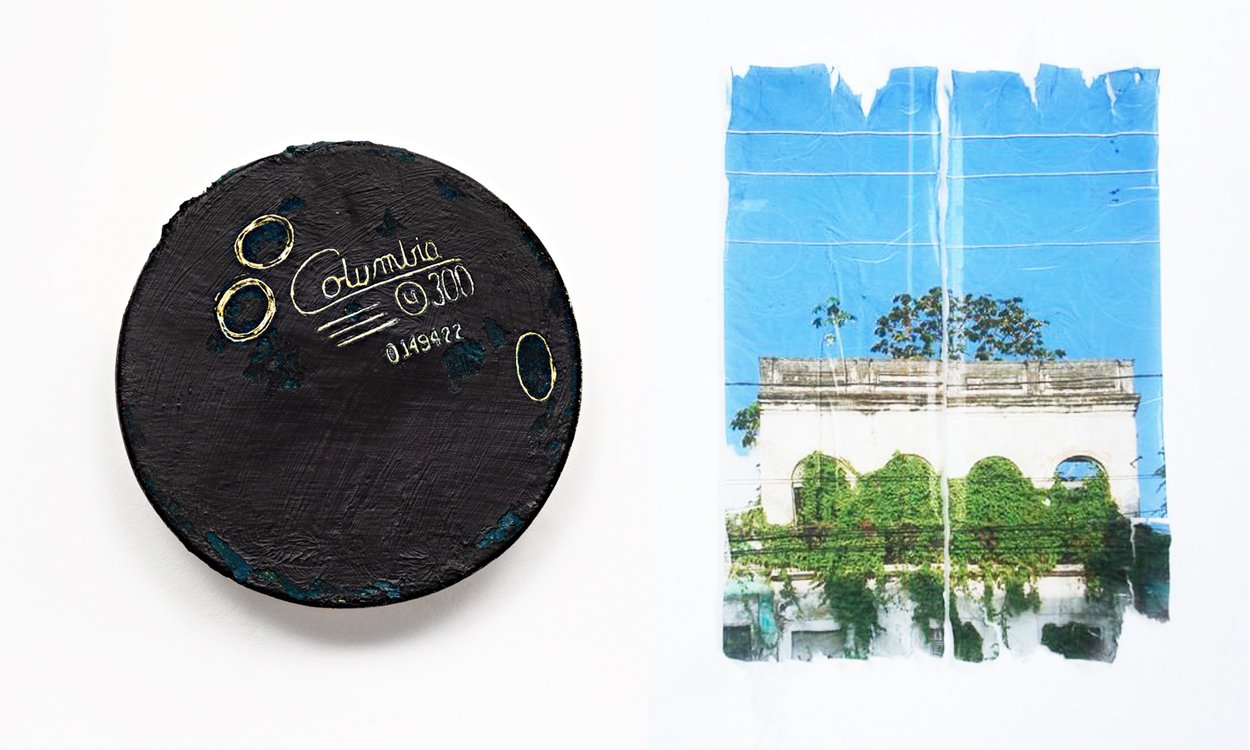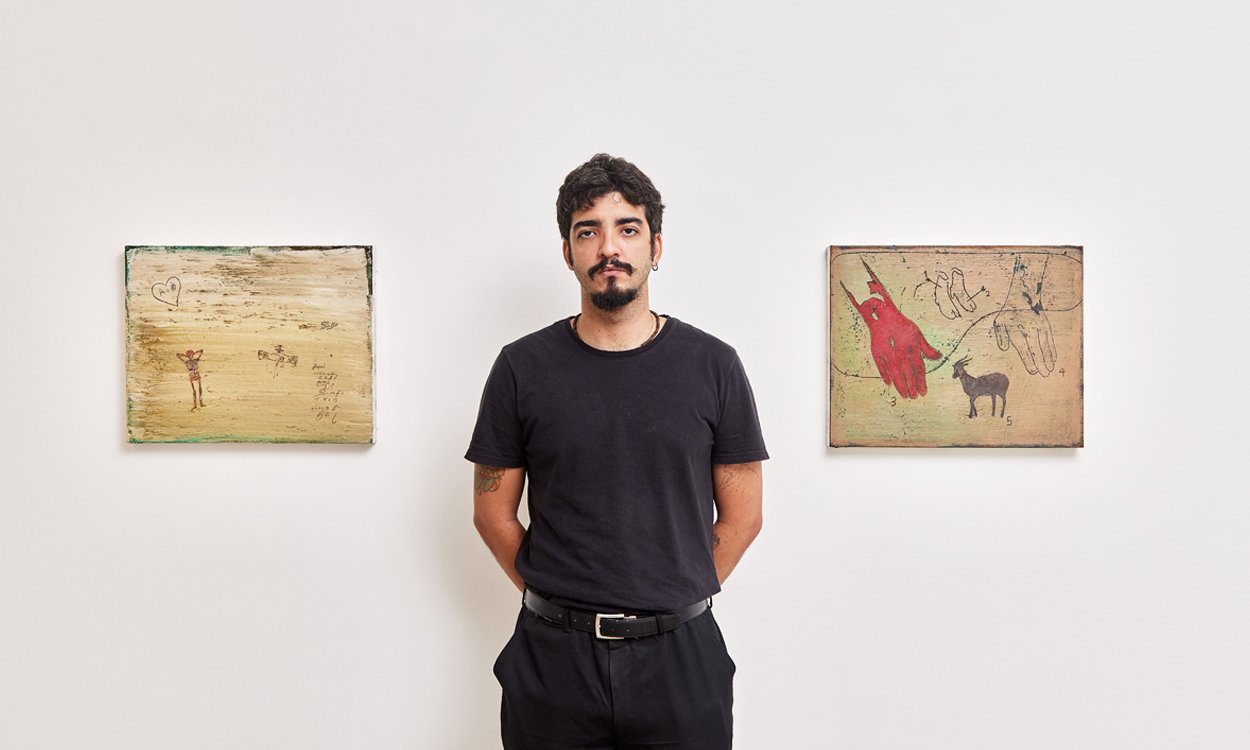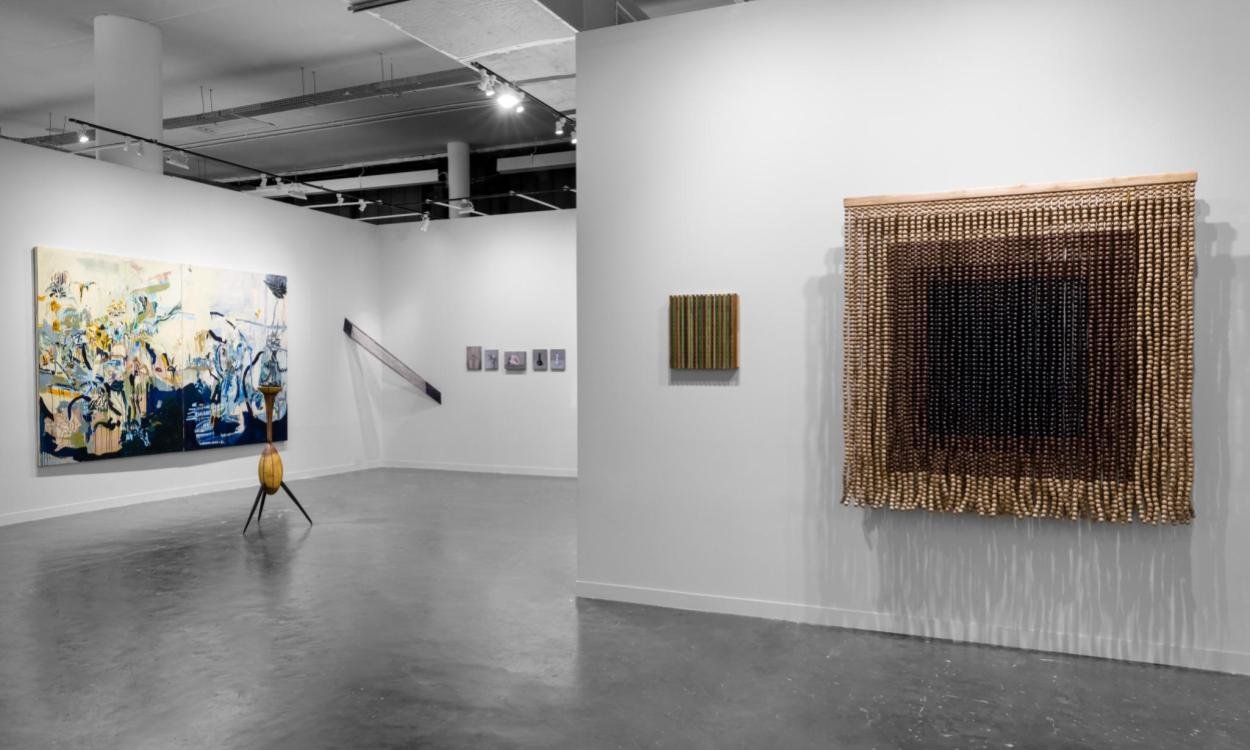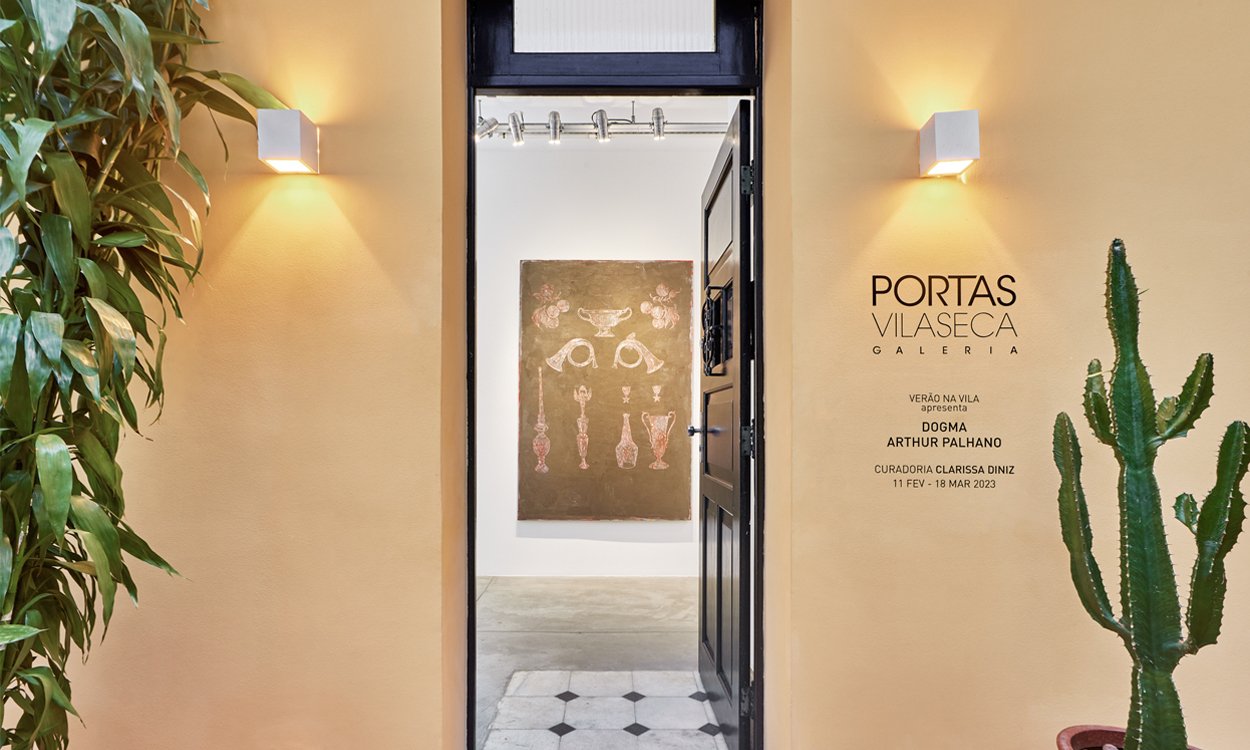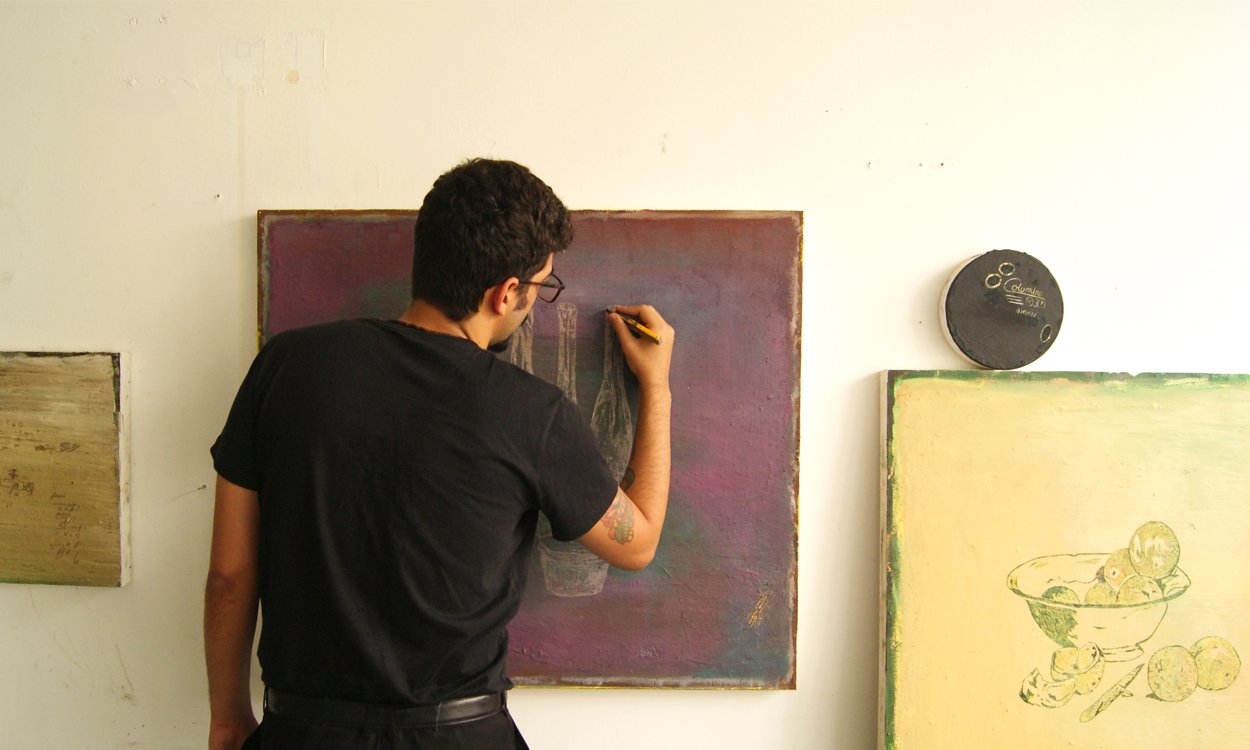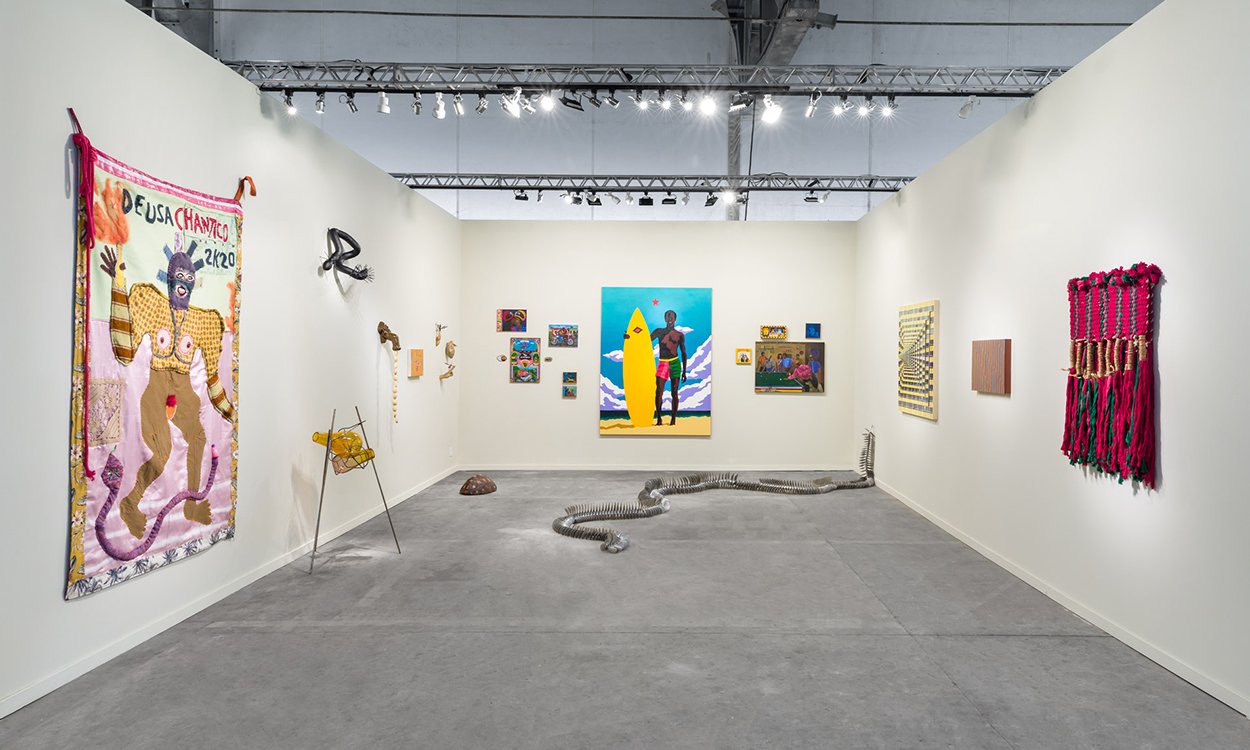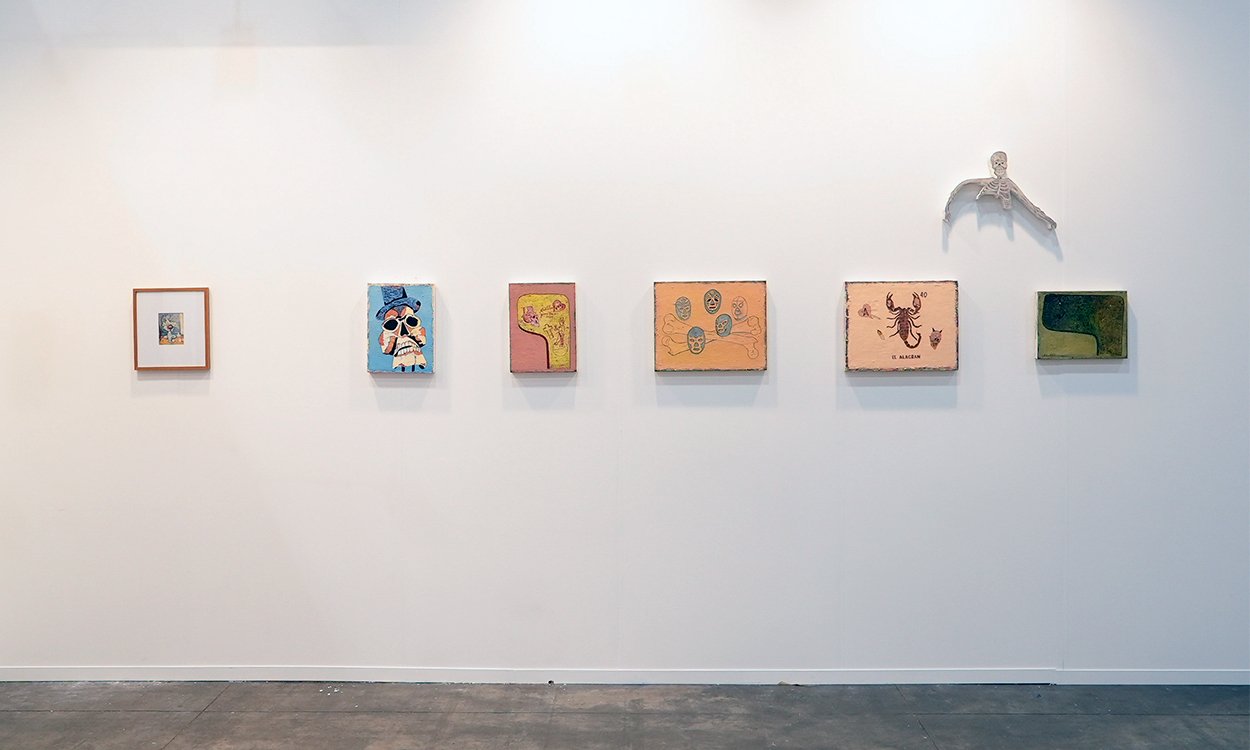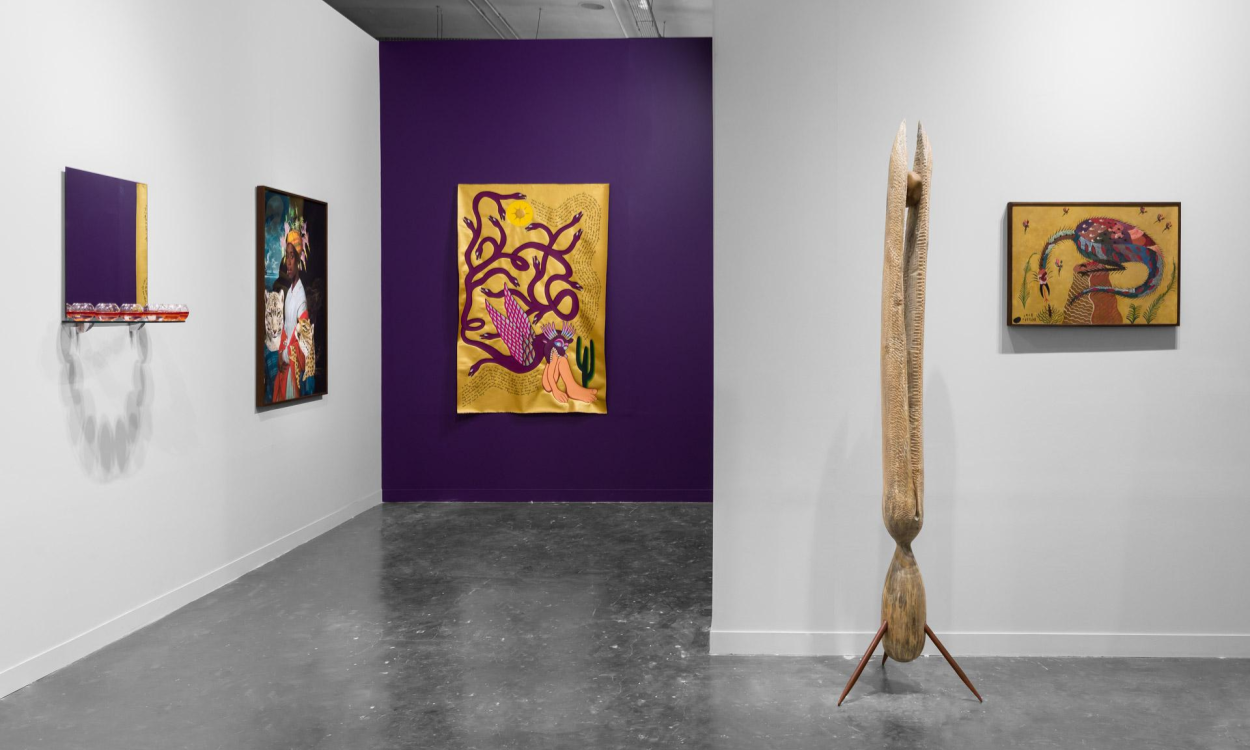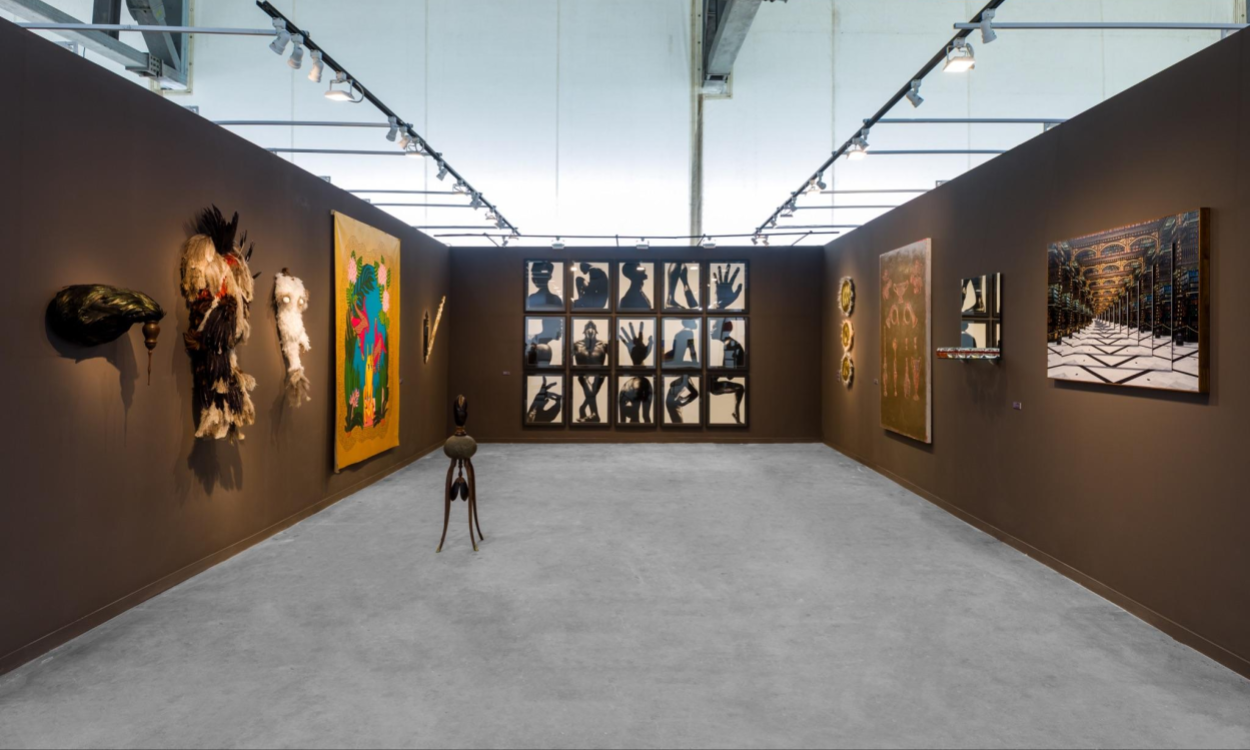
Rio de Janeiro, RJ, Brazil, 1996
Lives and works in São Paulo, SP, Brazil
His works navigate between painting, objects, and sculptures. In his research and practice, Palhano explores pictorial construction techniques and the symbolic interaction between objects. This artistic project comes to life through layer scraping exercises – an investigative process that allows the images to emerge organically from the core of the artworks, rising from the depths of their surfaces filled with textures of oil paint and enamel. This method results in a kind of telluric experience of time – one that emerges from the surface, occurring in the sedimentation of matter and manifesting through its cracks and crevices.
In 2019, he participated in the Programa de Formação e Deformação at the Parque Lage Visual Arts School (EAV) in Rio de Janeiro.
Recent solo exhibitions include: “Dogma”, curated by Clarissa Diniz, Portas Vilaseca Galeria, Rio de Janeiro (2023), and “Doce Bálsamo”, featuring a text by Eduarda Freire, Espaço Oásis, Rio de Janeiro (2022). Recent group exhibitions include: “Pequenas Pinturas III”, Auroras, São Paulo, SP (2025); “Partial Objects”, Mama Projects, New York, USA (2024); “重生的流域 Rebirth of the River Basin”, ARR Gallery, Hangzhou, China (2024); “Pequenos Formatos”, Silvia Cintra + Box 4, Rio de Janeiro (2024); “Objeto Sujeito”, curated by Pollyana Quintela, Felipe Vilas Boas, and Richard Romanini, Museu Paranaense, Curitiba, PR (2023); among others.
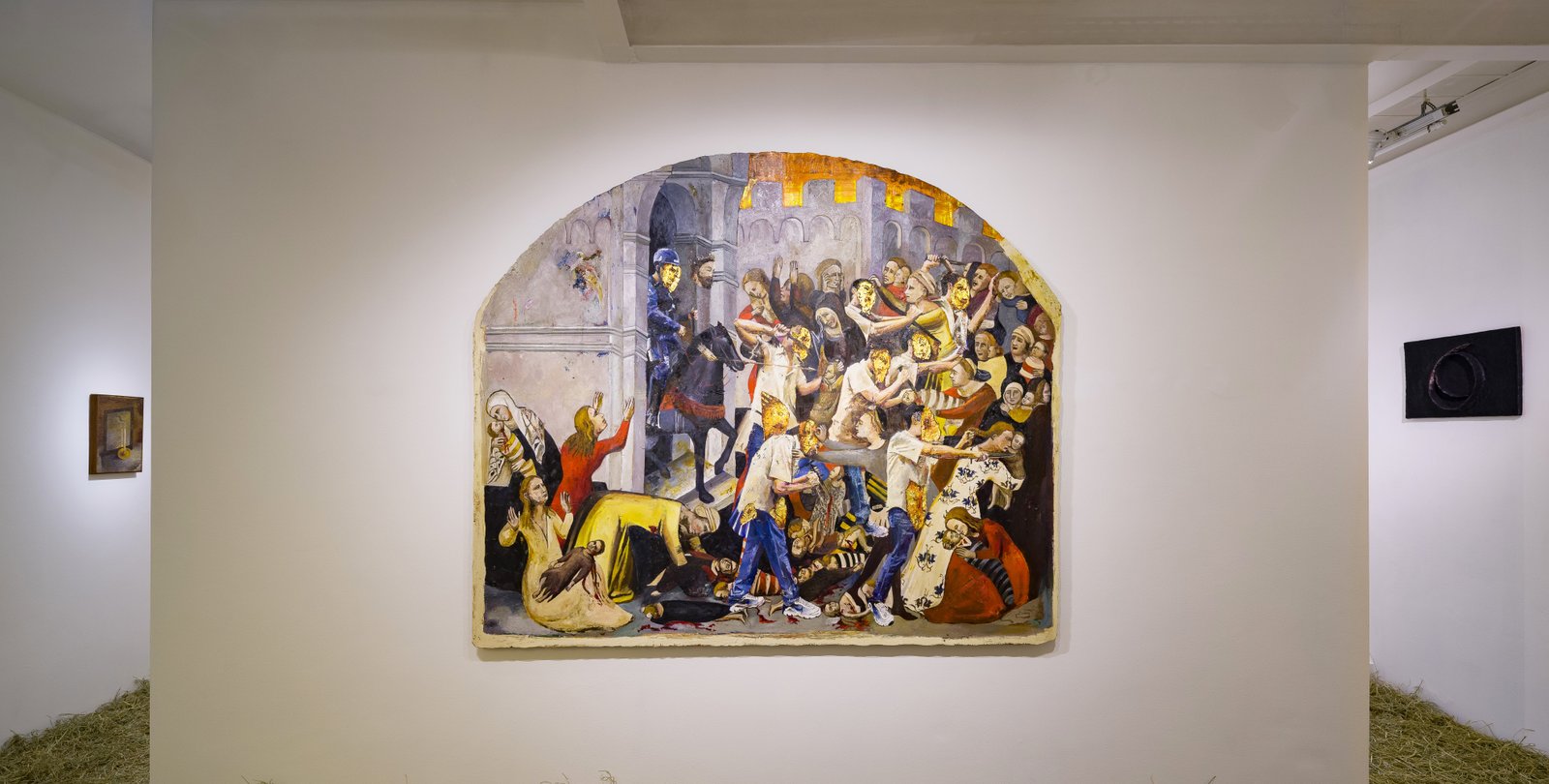


[Figure 1] Jesus Ministered to by Angels (1886–1894), by James Tissot (1836 – 1902). 17 x 24.8 cm. Watercolor and graphite on paper.
